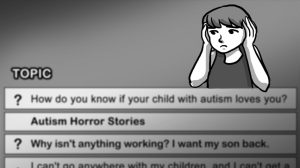
Group of people together at a meeting.
We’ve all heard the horror stories — it’s likely that you’ve even experienced some of your own.
Finding your back up against the wall, no heat or hot water, no rent control, the building’s front buzzer is broken, someone got mugged outside, you asked for repairs to leaks and garbage disposals — but no one was sent.
There are pests in your building and your child is developing asthma. There’s mold or water trapped in the walls of your apartment, the floors are buckling, and you got a notice that they were raising the rents AGAIN.
Too often, people are faced with these situations and their first impulse has been, “I have to move.” But Craigslist listings are bleak, there’s nothing affordable left in your neighborhood with convenient public transportation or work or school or daycare.
Again and again, gentrification prices people out of neighborhoods and makes renters feel powerless over their circumstances. Gentrification also brings down the standard of living for many renters, because landlords may hope to get rid of long-term tenants so they can raise their rents to reflect new market prices.
But there is one thing that can withstand gentrification: people coming together.
I used to tell my students, “These are the rules, if you don’t like them you have two options: 1) you can break them (but if you get caught you have to accept the consequences) or 2) you can change them.”
So, what would changing these rules look like?
The first step is finding out if other people in your building have the same problems, and then come together to find a solution. In a nutshell: organizing a tenant’s association.
I know, try not to yawn. When people hear the word “union” these days they think of some large entity or quite honestly, some white guy sitting behind a desk somewhere.
Over the years, corporations have demonized the word “union,” inferring that unions have stood in the way of flexibility and innovation. Union has become synonymous with words like “government” and is often perceived as some large third party entity.
In truth, the only thing having a union means is having an agreement rather than a contract.
This means a collective bargaining agreement, something negotiated with a group that will represent the workplace. In a housing complex, the agreement would be between the landlord and the renters.
Without a union, you’re considered “at-will,” which can be confusing. To be “at-will” sounds great. It sounds like you have more agency of what you can and cannot do. But in practice that goes both ways and most often works in favor of whoever yields the most power.
This means your boss can fire you at any point in time for any reason and your landlord can evict you at any time for any reason. A union offers security and stipulations around the termination of an agreement. It gives you and your neighbors more power.
So, rather than signing a contract with all the terms dictated by the leasing agency you, and hopefully your neighbors, can come up with a list of demands that you would like to see met in exchange for your rent.
Here are the steps to organizing in your building:
1. Talk to your neighbors
Talk to your neighbors. Yup, it’s time to go knocking on doors. This is an important first step and requires real face to face interactions — as opposed to flyers or emails.
Ask them if they have had the same problems you’ve experienced and if they think conditions need to be improved. Some people will feel the conditions are okay, many people will be afraid to confront their landlord. But don’t be discouraged.
Let people know that the common problems in the building need to be improved and find out if they’d be willing to work together with others in getting the building to fix these problems.
Find a good time to organize a meeting with your fellow renters.
Initially, it’s important that you meet with your neighbors in their apartment because the building is where all the organizing is going to occur. But some will want to speak to you outside or at a nearby coffee shop.
Come with a date for a follow-up meeting in mind, get their contact information (phone number and email), and make sure to follow-up and confirm their attendance at the meeting.
Above all, listen.
This is a good time to learn whether or not they are interested in doing something or they just want to complain. If a group of tenants agrees to participate then it’s time to move on to step two.
2. Plan a meeting
WHO?
If any of the neighbors you spoke with indicated leadership or active interest, decide who will chair the first meeting. Make sure it’s clear that this does not necessarily mean they will become head of the association.
It’s a good idea to delegate out various tasks to various people and to rotate these commitments. Also, if you know someone who is active in a successful tenant’s union, consider inviting them to come and speak with the group, share their experiences, and provide insight.
WHEN?
Keeping up the momentum and sense of urgency is key in the early planning stages. Try to hold the meeting as quickly as possible.
If most of the people in your building work during the day, plan the meeting in the evening after dinner or in the afternoon on the weekend. Use your judgment and choose whichever seems most convenient.
WHERE?
The meeting can be held in the building in a public area or shared space or in someone’s apartment.
HOW?
Make a flyer and include the purpose of the meeting — whatever seemed to be the most common complaint amongst neighbors, lack of repairs, rent hikes etc. — and include the date, the time, and the location where the meeting is to be held.
Post the flyers around the building and consider slipping leaflets under doors. As it gets close to the meeting time, you can have someone do one last round of door-knocking to remind your neighbors it’s time to meet.
3. The meeting
Before the meeting, you can prep by putting together a sign-in sheet with the date, the tenant’s names, apartment phone numbers, and email addresses. The sign in sheet should be placed at the entrance.
Bring paper and pens and ask someone with decent handwriting or a fast typist to take minutes. Check to see if they would be willing to send out the minutes to those who signed in.
Whoever chairs the first meeting can introduce themselves by their first name and apartment number and explain the reason the meeting was called.
Also, make sure to underline the importance of taking minutes and distributing them to all the tenants so everyone can stay up to date whether or not they are able to attend the meeting.
If you have a large building, you may want to just go around the room for introductions, names, and unit number and organize the group by floor.
If it is a smaller group then people can introduce themselves by name and apartment number and share what it is that brought them to the meeting as well as what they hope to accomplish.
The most important function of the first meeting is to get a consensus of building-wide problems. Ask your neighbors what they see as the problems in the building — this can be written out on butcher paper and prioritized later.
If a crisis has brought you all together — think no hot water or a rental hike — then this will clearly serve as the jumping off point. Make sure to develop both short-term and long-term goals.
People may be slow to engage at first. Here are some building-wide issues the group may consider addressing:
- What experiences have tenants had when needing repairs in their apartments?
- Does the owner generally refuse (or take an inordinate amount of time) to send a repair person?
- Does the building have sufficient garbage cans given the number of apartments in the building?
- Does the building have a superintendent? Are they accessible?
- Does the superintendent clean the building on a regular basis?
- Is there a problem with roaches and/or rodents?
- Does the building have regular extermination services?
- Do exterminations take place at a convenient time?
- Is the building’s front door adequately and securely locked?
- Is there proper lighting outside the building, in the vestibule, in the hallways, in the basement, in the back alley, in the stairwells?
- Is the roof door secured?
- If there is an elevator? If so, does it have a mirror that provides tenants with visual access to its blind corner before entering?
Move up/move Back:
Try not to let one person monopolize the discussion around their particular problems. If you find someone is speaking about a particular leak in their unit, for example, intervene to ask others if they have encountered similar problems.
Try to refocus the discussion and draw out people who are not speaking as much. Try to ask them specific questions; sometimes the quiet ones have the most to contribute. Those who have specific problems can be invited to discuss at more length after the meeting.
Strategize:
- Discuss how complaints have been dealt with in the past. Has anyone kept a record of their previous complaints? Who do they notify when they have a complaint?
- Do they know who owns the building versus who manages it? What have their experiences been in the past in dealing with the owner?
- Elect someone to find out about the building owner and management company — look up previous filings with the Better Business Bureau, other buildings they manage, or companies they own — to report back to next meeting.
- Have previous complaints been by telephone, or do tenants write? Is there a difference in the response depending on whether it is in writing or verbally? If tenants have written, do they have copies of these letters?
Vote:
Finally, decide whether or not you are ready and willing to work together. Take a vote on whether or not to form a tenants’ association. If the group votes in favor of having a tenant’s association, then you’re ready to begin working together as a group.
Set a date for the next meeting and delegate follow-up assignments, such as the minute-taker sending notes out to the group, finding out who owns and manages the building, and deciding who will chair the next meeting.
***
Ultimately, there is no right or wrong way to set up a tenants’ association. It should be organized in a way that best addresses a group’s specific needs, and allows the members of a group to set policies and make decisions.
A group should strive to be as inclusive as possible and make it simple for the group to improve the building’s conditions.
With gentrification and rising property values, tenant’s unions put you and your neighbors in a proactive position when it comes to housing security. As always, rights will vary by state, so keep up to date with some resources below:
You can find Tenant Rights laws for each state at Tenants Legal Center.
For information on legal services in each state, see the National Housing Law Project list.
For a list of Tenant Organizations by state, see this list from the National Alliance of HUD Tenants.
[do_widget id=’text-101′]
Melissa Chadburn is an Everyday Feminism Reporting Fellow. Melissa has written for Guernica, Buzzfeed, Poets & Writers, Salon, American Public Media’s Marketplace, Al Jazeera America and dozens of other places. She is a fellow for The Economic Hardship Reporting Project. Her essay, “The Throwaways,” received notable mention in Best American Essays and Best American Nonrequired Reading. Her debut novel, A Tiny Upward Shove, is forthcoming with Farrar, Straus, and Giroux.
Search our 3000+ articles!
Read our articles about:
Our online racial justice training
Used by hundreds of universities, non-profits, and businesses.
Click to learn more




















